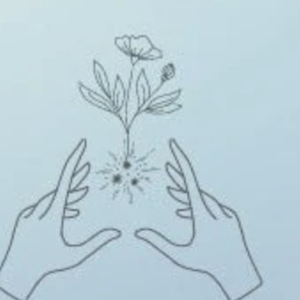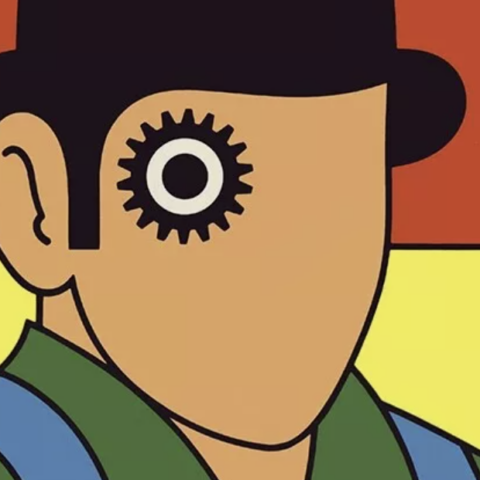Reading Between the Lines
By Iona Cleave
“Everything is nothing, with a twist” (Vonnegut) And other confusing ideas explored within the blurred line between fiction and reality.
The realm between fact and fantasy is often hazy in novels, a literary grey zone, where what is real and what is the authors’ imagination becomes utterly muddled.
It’s no wonder that works of fiction, draw more than just inspiration from real-life experiences and people. However fanciful the nature of novel, humans want to understand humans, and so, these works can never be too far removed from our own world or our humanity. A certain realness or humanness is needed.
Indeed, many fictional characters are, in part, pieces of their author, a mirror veil of distinctive parts reflected back of the creator. Yet, a subtler literary drift is the use of real-life people to inspire characters within fiction, who then become forever immortalised within these novels.
A borrowing of reality, embedded craftily within their work. It is at this point where fiction blurs into truth, that the power of reality becomes further explored. It may be “fiction” but often the most memorable, relatable and complex characters are deeply drawn from reality.
Here are a few examples of the thin line between real and fantasy within literature…
The Fitzgeralds

It’s easy to be captivated with the moving and tragic story of Fitzgerald and Zelda, the jazz age’s golden couple. They were young, glamorous, reckless and admired. As Fitzgerald describes, his generation had “grown up to find all Gods dead, all wars fought, all faiths in man shaken” and all they could do is live life in excess.
The society that Fitzgerald became a part of – rich and raucous, was at the very heart of the roaring twenties. Their own wild experiences of high society on Long Island forms the glittery backdrop of The Great Gatsby – a story that emulates the extravagance and indulgence of the time.
Like Gatsby’s and Daisy’s love story, theirs was self-destructive and doomed to fail. The glitter wore off, and their marriage fell apart. Ruined by the 1929 stock market crash, overcome with alcoholism and tired of the lives they used to love, Zelda and Fitzgerald grew estranged.
Zelda suffered mental breakdowns and struggled to keep hold on reality. She was in and out of psychiatric institutions until her death. A painfully tragic story, made only more tragic by much of her story being emulated within Fitzgerald’s work.
Gatsby also struggles to keep his hold on reality, as his dreams far surpass it. Yet, it is Daisy in which his wife Zelda is seemingly in parts based on. Like Daisy, the enchanting, wealthy socialite that bewitches Gatsby, Zelda was the belle of the ball, rich and beautiful. Fitzgerald remarked after meeting her that ‘I love her and that’s the beginning and end of everything’.
The famous line: “I hope she is a fool- that’s the best thing a girl can be in this world, a beautiful little fool” is said to be the exact line his wife said after learning of their baby being a girl.
This borrowing or perhaps exploiting of each other lives for the page grew dramatically when Fitzgerald wrote The Beautiful and the Damned and Tender is the Night, and Zelda wrote Save Me The Waltz. These works of “fiction” are almost explicitly about each other and their complex, troubled marriage and mental states.
This seems to create a new depth and enrichment to their fictional characters. Fitzgerald and Zelda are writing from what they truly know and have experienced. Yet, it makes it all the more painful to read as we learn the hidden truths behind the marriage of such a compelling and lonely couple.
Slaughterhouse Five

“All of this happened, more or less” opens Vonnegut’s Slaughterhouse Five, a novel that floats in and out of reality and fiction. Billy Pilgrim, the protagonist who has become ‘unstuck in time’, meanders between the wonders of science fiction and the brutal horrors of war. He escapes from the harsh reality of the world to the peaceful and distinctly un-human fantasy world of Tralfamadore ‘where everything was beautiful and nothing hurt’.
What is real and what is not all comes under question and changes as quickly as the author can say ‘So it goes’.
Yet, the basis of the character of Billy provides even more juddering effects of moving between real and fantasy. Edward Crone, was a soldier who experienced the firebombing of Dresden alongside Vonnegut. Yet, unlike Billy and Vonnegut, he never did leave Dresden. He died full of despair and refusing to eat or drink. As Vonnegut describes “he didn’t want to live in such a world anymore”.
This disjunct flipping between fantasy and reality sharpens our grasp on what is real. The destruction of war and the fragility of human life, is pitted against the abstract and illogical imagination of a character, who in truth never survived. Yet now, he is immortalised within the story, which brings a new level of reality and tragedy to the novel.
More modern trends
Now, an abundant literary trend seems to be the writing of fiction surrounding truth or re-imagining the voices of people that had once lived. Take Hillary Mental’s best-selling Wolf Hall trilogy, which follows the life of Thomas Cromwell in the court of Henry the VIII or Joyce Carol Oates’ Blonde, which chronicles a fictionalised account of the inner workings of Marilyn Monroe.
Among this genre, is also The Hours by Michael Cunningham. A beautiful intertwining of three parallel stories of distinct yet similar women, quietly struggling in successive generations. The novel is inspired by the real life and writing of Virginia Woolf, and we see her inner mental torment. Another is a woman suffocated by her role as a housewife and the last is a modern version of Mrs Dalloway who questions whether her life has meaning.
The exploration of these fictional women, set amongst the true tragedy of Woolf’s own life and eventual suicide, creates an almost everlasting nature to Woolf, as she is emulated through each of the women. The power belongs to the reader to find such truth amongst the fiction.
The notion of time is heavily drawn on, fitting for a novel that jumps between times, people, fact and fiction. It seems Woolf stands the test of time, or more likely Cunningham wanted to reveal that painfully she was too ahead of her time.
Yet, it certainly raises the question, how can we claim to know the inner life worlds of others without ever meeting them? Is the borrowing of others’ lives or the imagining of their inner thoughts verging on morally questionable?
Or is it simply that the real and the fantastical can intersect to create more beautifully told stories and characters, anchored in parts of truth, believability and depth.
Whatever the view, the blurred line between fiction and reality, increasingly muddled and explored within literature, challenges what we understand – what is real, what is borrowed and what is imagined.
It urges us to read further between the lines and forces us to confront our own realities.
If you enjoyed reading this, you might like Love Letters





